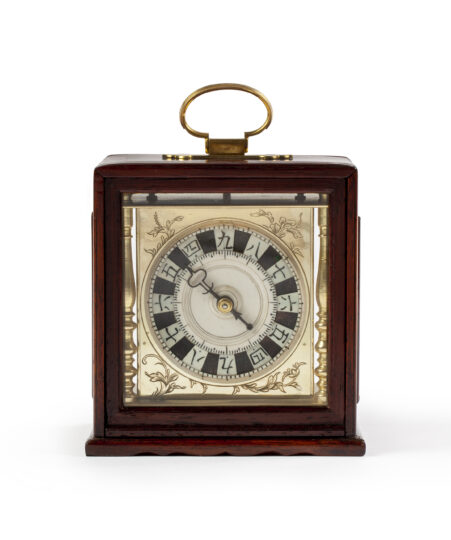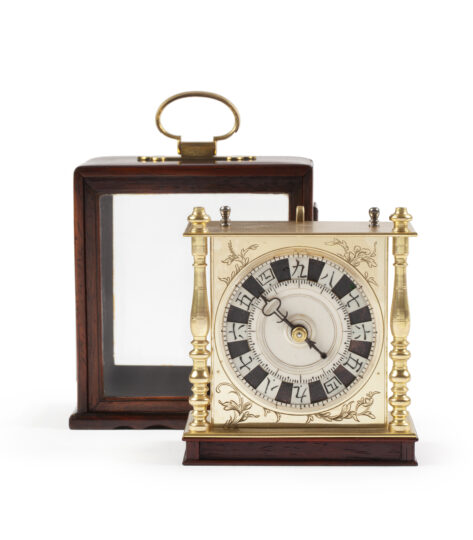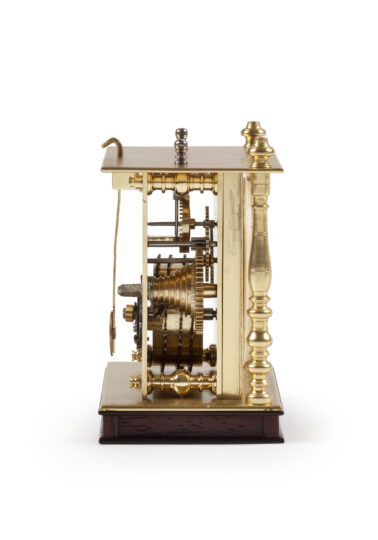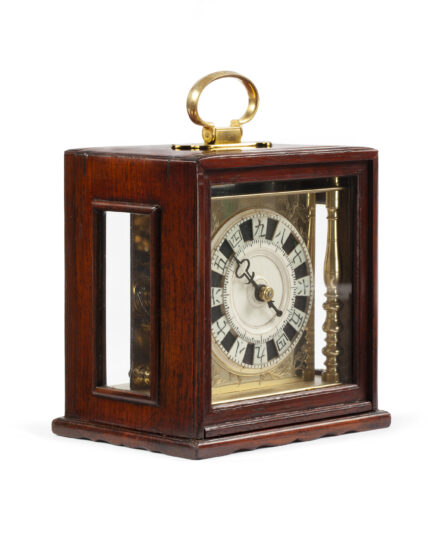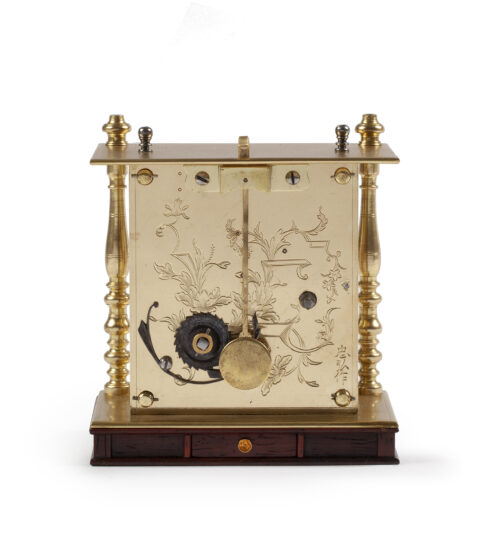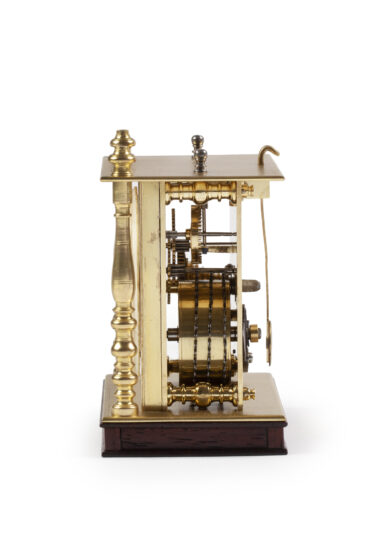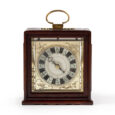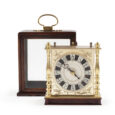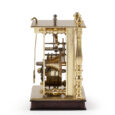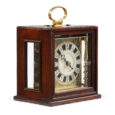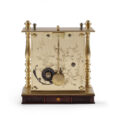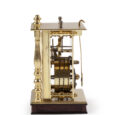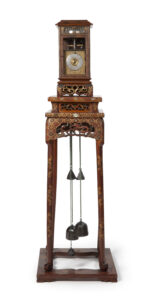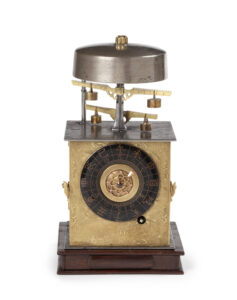JAPANESE TABLE CLOCK ‘MAKURA DOKEI’ Ca. 1850
M&R 35A
JAPANESE TABLE CLOCK ‘MAKURA DOKEI’
Circa 1850
Japan
Movement
The brass spring-driven fusee movement is constructed between top and bottom plates, connected by turned pillars and consists of a going train with verge escapement and a short pendulum. It is wound from the rear side.
Dial
The brass front is beautifully engraved, depicting floral and scrolling leaf motifs. It has a bone chapter ring with twelve adjustable chapters, bearing Japanese hour numerals. The time is indicated by a single pierced blued steel hand.
Case
The movement is housed in a wooden case with glazed sides. There is a drawer in the base, which can be opened at the rear side and contains the winding key. In addition, there are glazed panels to the front and rear, showing the engraved front and rear plates. The panels can be slid up to access the hands and the winding square. The case is surmounted by a brass carrying handle.
Duration: one day
Height: 12 cm.
Width: 11.5 cm.
Depth: 9 cm.
Literature
– Tijdschrift September 2002 and December 2002
– R. Yamaguchi, The clocks of Japan ( L61)
– N.H.N. Mody, Japanese clocks (E17)
Japanese time measurement
During the Edo period (1603-1868) only the Dutch were allowed to trade with Japan. They were the ones who introduced clocks into Japan. Japanese clockmakers adapted the designs and mechanisms to their own time measurement system. In this way they designed a double escapement – the part of the clock that makes the clock tick – to indicate the time during the day and the night. The design also involved Japanese characters and Chinese signs of the zodiac.
Japanese time measurement is very different from its counterpart in the Western world. Instead of a fixed value for an hour the length of an hour in Japan, called toki is variable depending on the length of the day and night. Day and night are both divided into six toki, which cover the periods from sunrise to sunset and from sunset to sunrise. In summer the days are longer than the nights and consequently a day toki last longer than a night toki. In winter it is the other way around. This is the reason why Japanese clocks have sliding chapters to adjust the length of a toki. There are also clocks with a fixed chapter ring and a revolving hand. To regulate the lengths of the toki the weights on the foliot can be moved, which makes the clock go faster or slower. This is mainly found in older clocks. The hour numerals run from nine to four, the latter being midday. Japanese clocks indicate how many hours there are to come (5 is followed by 4), whilst European clocks indicate how many hours have passed (5 is followed by 6). In Japan the figure 9 was holy. Each toki, twelve in total, also had its own sign of the zodiac, which were sometimes indicated on a ring around the chapter ring.

